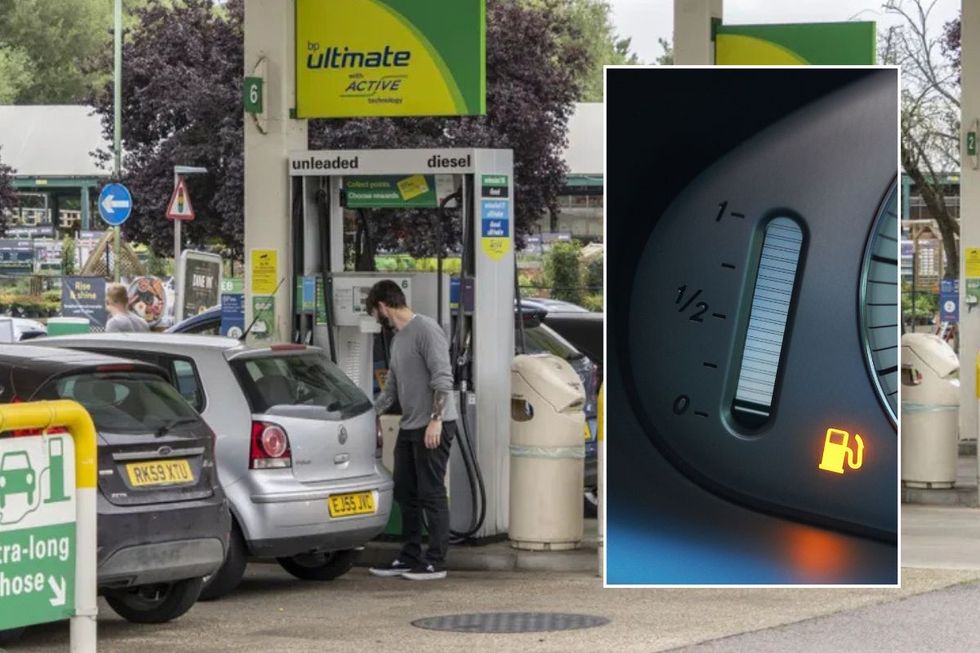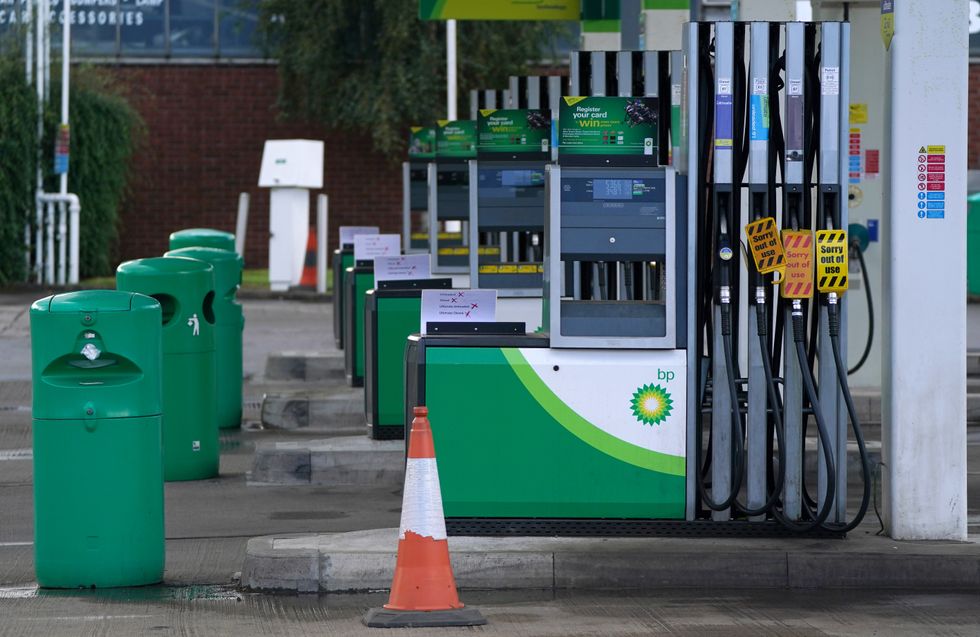Petrol and diesel drivers issued urgent warning when visiting fuel stations - 'Not a risk worth taking'
WARNING: Motorists to see HUGE diesel and petrol price rises
|GB NEWS

Motorists are being urged to avoid buying fuel from motorway service stations
Don't Miss
Most Read
Experts are warning that motorists could face fuel chaos if they continue to engage in a dangerous habit when driving.
The latest data from RAC Fuel Watch shows that motorists are paying an average of 134.64p per litre of unleaded, while diesel car owners are paying almost £1.42.
While the RAC does not forecast any changes to the price of fuel in the near future, drivers are encouraged to avoid motorway service stations.
On average, drivers can expect to pay more than £1.50 for petrol and as much as 162p per litre for diesel.
Do you have a story you'd like to share? Get in touch by emailing motoring@gbnews.uk

Motorists are being urged not to let their fuel gauge drop too low
|PA
It comes as experts warn that motorists could be pushing their luck by continuing to drive after the fuel warning light illuminates, treating it as a gentle reminder rather than an urgent alert.
They warned that this widespread habit could prove far more costly than anticipated, especially if they were to break down on major A-roads or the motorway.
Beyond the obvious risk of being stranded roadside, ignoring the amber warning can inflict serious damage on vital vehicle components and potentially result in legal penalties.
Fuel expert Gordon Wallis from WeCompareFuelCards.com has issued stark warnings about the hidden dangers of running vehicles on near-empty tanks.

Motorists should ensure they always have enough fuel in their tank
| PAThe consequences extend well beyond mere inconvenience, affecting both the mechanical integrity of modern vehicles and drivers' legal standing.
The warning light typically activates when fuel levels drop to just 10 to 15 per cent of tank capacity, according to Wallis.
He added: "When your fuel warning light comes on, it usually means your tank is down to its last 10 to 15 per cent.
"That might seem like enough for a few extra miles, but it's not a risk worth taking, especially if you're stuck in traffic or heading somewhere rural."
LATEST DEVELOPMENTS:
The expert cautioned that this minimal fuel reserve leaves drivers vulnerable to unexpected circumstances, especially as modern vehicles' sophisticated systems make them particularly susceptible to damage when operated with insufficient fuel levels.
Contemporary engines require adequate fuel levels to function properly, with components like fuel pumps particularly vulnerable to damage when tanks run low.
Wallis continued, saying: "Continuously running low on fuel can damage key components like the fuel pump. These parts aren't designed to work with minimal fuel, and over time, it can reduce the life of your vehicle.
"Your range estimate can drop quickly depending on how you're driving. If you're on the motorway one minute, then stuck in slow traffic the next, your fuel can disappear faster than you think."
Drivers who rely on their vehicle's range estimates face additional risks, as these calculations can prove unreliable.
While driving with an illuminated fuel warning light isn't explicitly illegal, the potential consequences of running empty could result in serious penalties.
"If you run out of fuel and end up blocking a road or causing an accident, you could be charged with careless or inconsiderate driving," Wallis explained.
"That can come with a fine and penalty points all for something completely avoidable." The expert recommends a preventative approach to avoid both mechanical damage and legal complications by filling up when the fuel level hits the quarter-tank mark.










